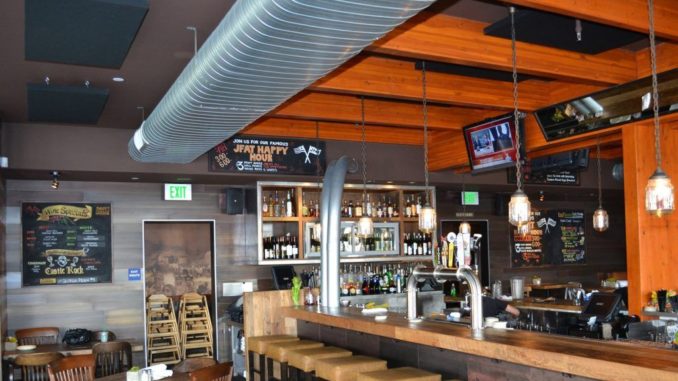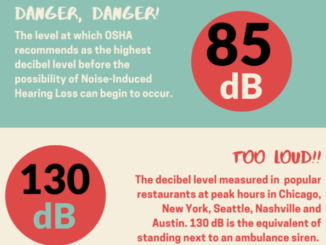
By RTN Staff - 9.10.2019
Restaurant noise levels during peak business hours can consistently reach well over 100 decibels, significantly higher than the 85 decibel ceiling the Occupational Safety and Health Administration (OSHA) says is a safe limit. The National Institute for Occupational Safety and Health (NIOSH), part of the Center for Disease Control, recommends that employees’ exposure to noise not exceed 85 dBA for an 8-hour shift.
The 85 decibel ceiling is loud enough to do severe damage, as detailed in this infographic, with some sounds loud enough to cause hearing loss after only 15 minutes of constant exposure. This creates a hazardous working environment for restaurant employees, in particular, including waiters, cooks and other employees who are exposed to the noise levels for extended periods of time.
A research study by hearing solutions company Oticon measured decibel levels at restaurants in Austin, Chicago, Denver, Detroit, Nashville, and other metropolitan locations during peak hours. The results were eye-opening. In many restaurants, sound levels reached over 120 decibels during peak hours, the equivalent experience of standing beside or near an ambulance siren for an extended period of time.
Restaurant customers are also at risk, of course, with more people considering a restaurant’s noise level, which Zagat, Yelp and a growing number of other ratings and reviews sites now track, to determine whether a place is worth the visit. In fact, according to Zagat’s 2018 Dining Trends Survey of nearly 13,000 diners in the United States, noise was the most irksome issue when it comes to dining out at 24% followed by service (23%), crowds (15%), high prices (12%) and parking (10%).
So how do restaurants turn down the volume? It’s not as easy as it sounds, especially in a restaurant environment where independent multiple sources, from patron’s voices to the clanging of plates and silverware, each contribute to rising noise levels as activity increases. But next-generation sound absorption panels do offer a solution.
Primacoustic, a leading provider of acoustic panels for restaurants, reported that a dramatic rise in NIHL (Noise-Induced Hearing Loss) is leading restaurant owners and manager to address dangerously high decibel levels by installing acoustic panels that reduce the incidence of reverberant and ambient noise. NIHL is a noise-related hearing condition that can lead to debilitating tinnitus, a permanent and untreatable constant ringing in the ears.
“Sound panels don’t attenuate source level decibels, such as that of a voice or band amplified by a church sound system or plates clanging in a restaurant,” said Primacoustic’s Steve Dickson in a recent interview (click here to listen). “That said, acoustic panels will help lower decibel levels by absorbing that sound after it leaves the source and stopping that sound from amplifying in the room, which can be caused by the sound bouncing off of reflective or hard surfaces.”

It has become clear that acoustic treatment needs to be considered as a primary solution to address loud restaurant spaces, as modern design continues to trend towards harder surfaces and higher ceilings that will reflect sound. Many restaurant owners, discouraged by the high cost of possible structural renovations warranted to address poor acoustics are finding an affordable solution in the installation of sound absorption panels on walls and in ceilings.
“We started noticing a pronounced echo due to the 23-foot high ceilings we have in our restaurant,” said Christopher McFadden, general manager of Piva Modern Italian Restaurant, located in Vancouver, Canada. This echo created too much bleed from a conversation being held at the next table, which was distracting and off-putting for our patrons.”
After the installation of the Primacoustic Broadway panels, McFadden saw a dramatic difference in the dining experience at Piva. “I noticed a difference the first time I was in the restaurant after the installation was done. I was sitting at the bar, and 20 feet away I could hear the buzz of the restaurant but not the actual conversations that were happening at those tables. The acoustical improvement has been noticed across the board by our guests.”


